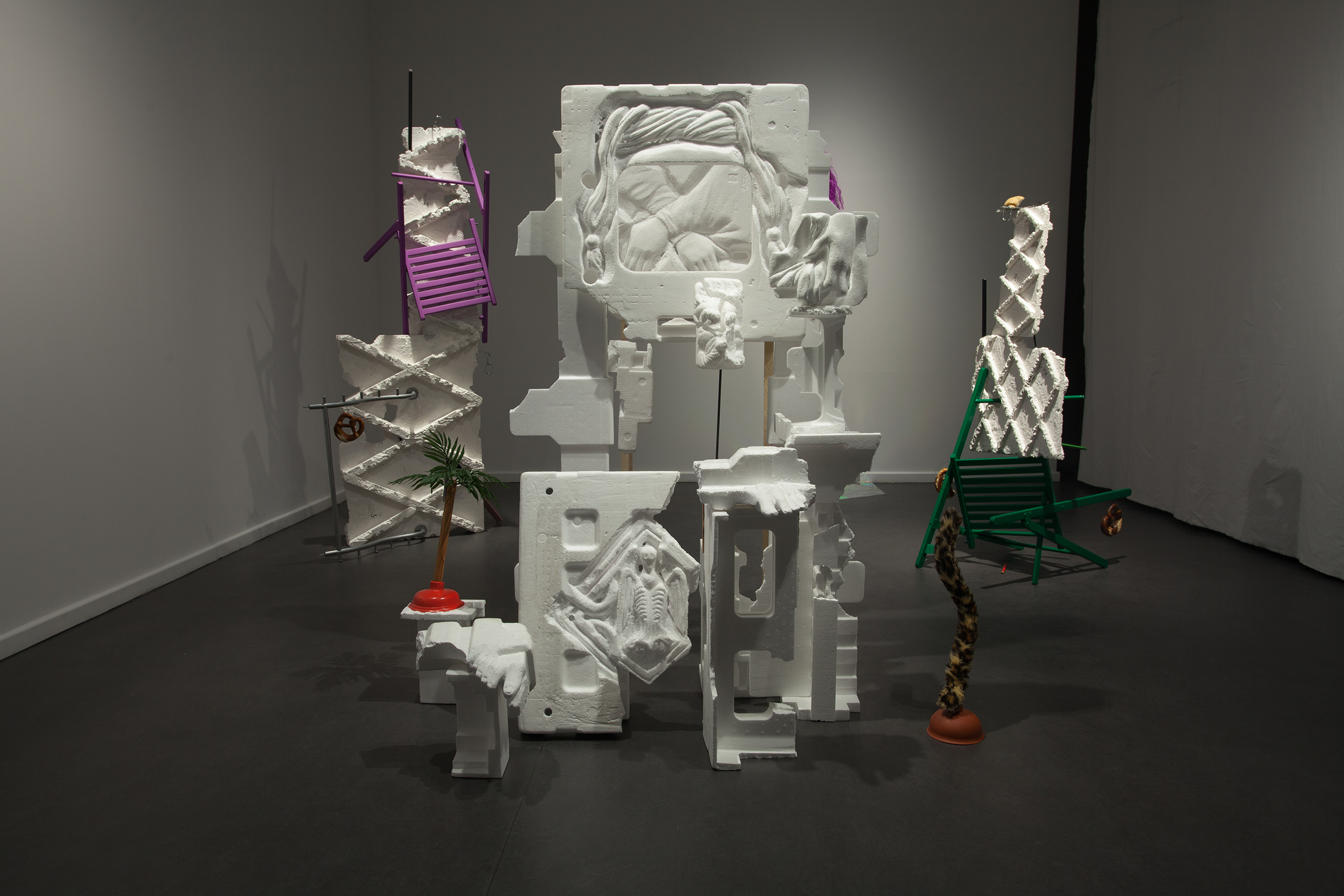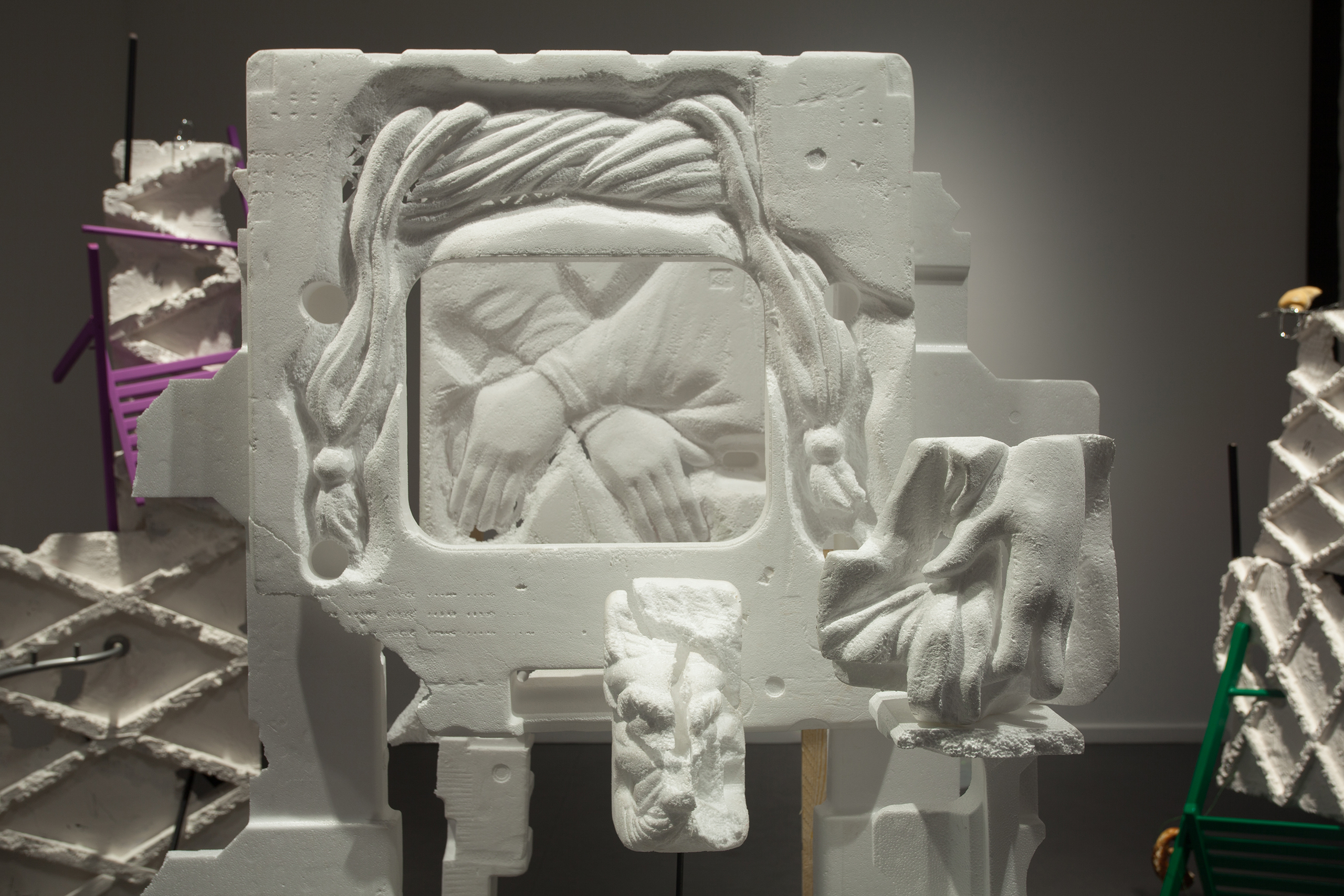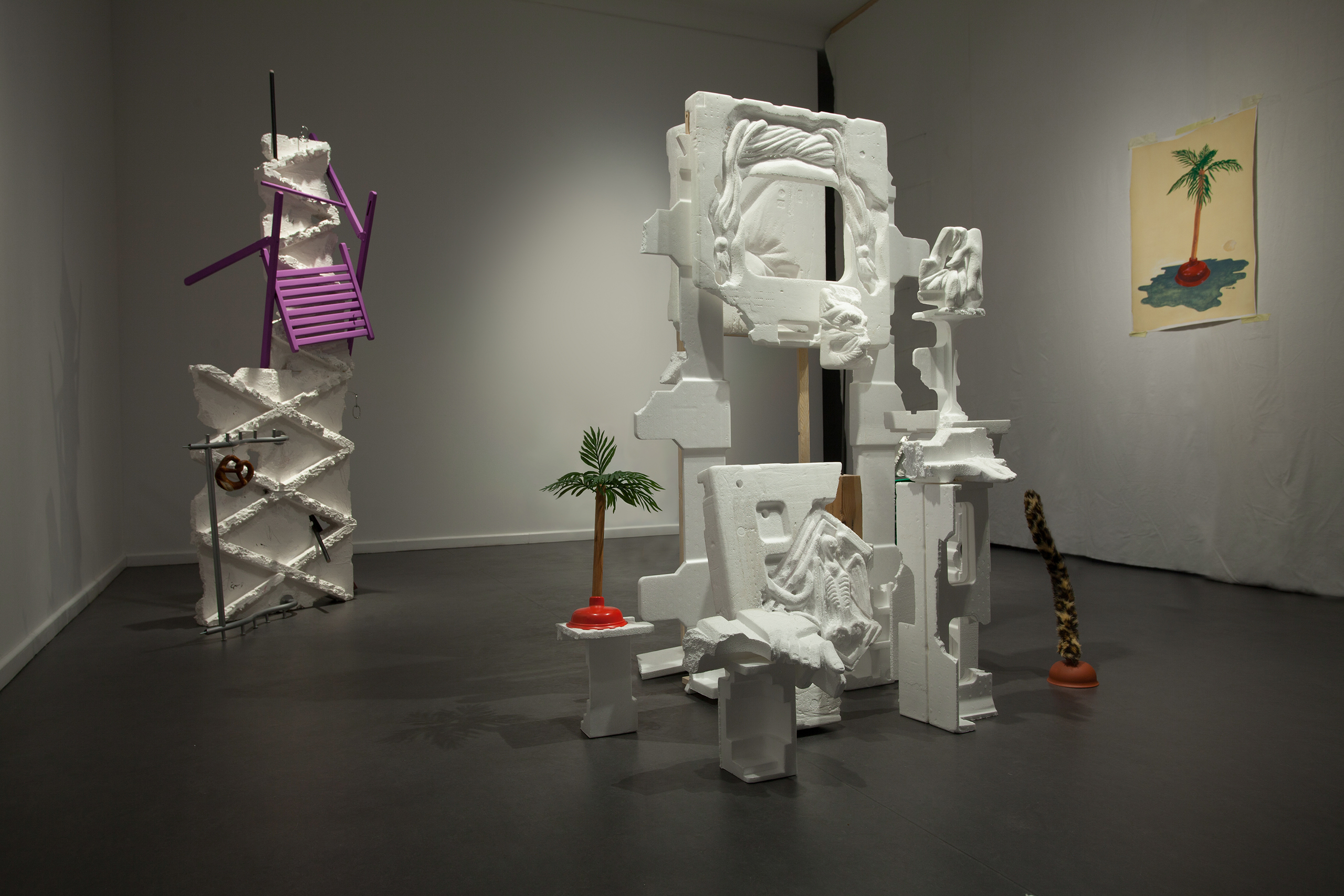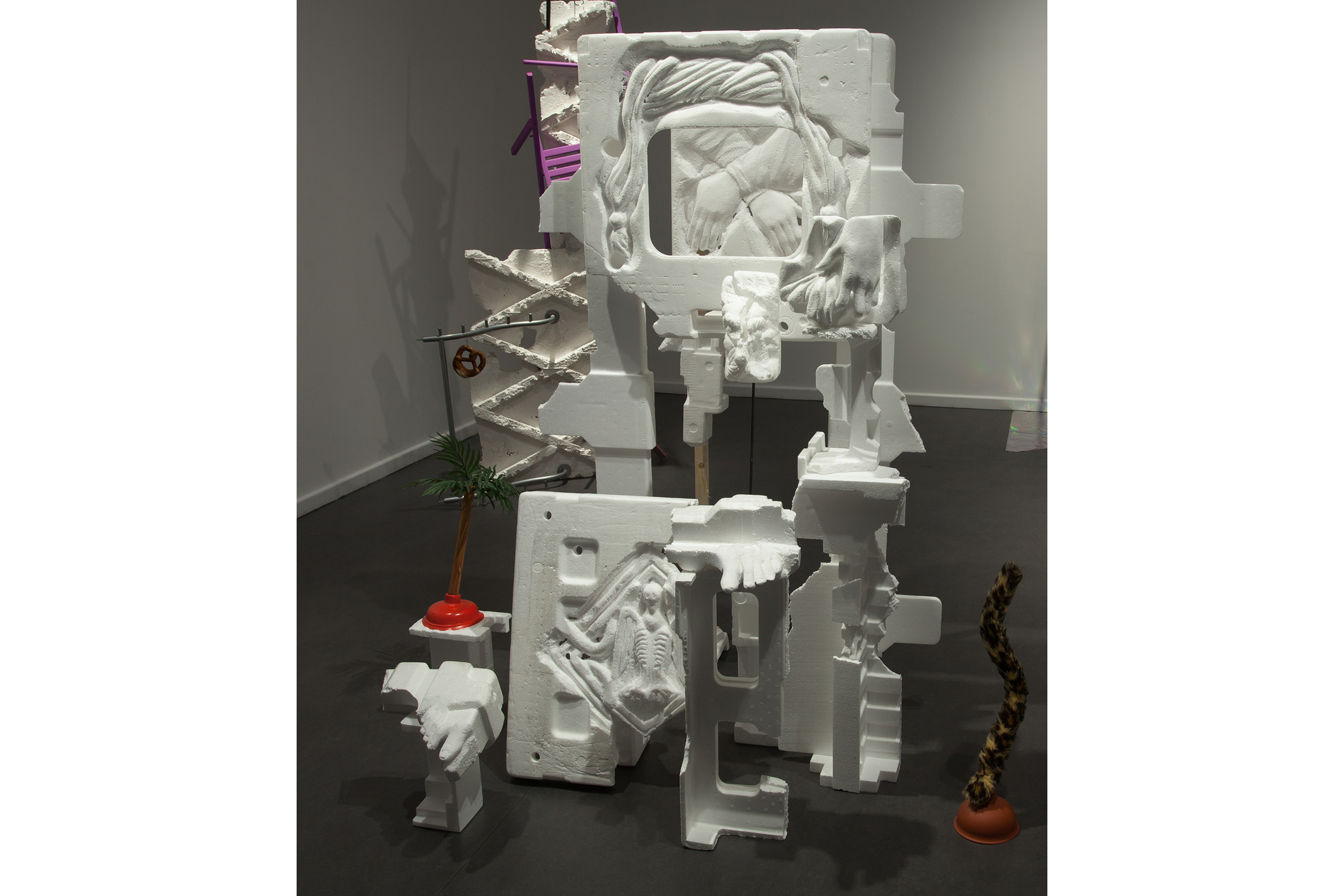SkulpturAtlas (Copyshop)
emballages d’électroménager en polystyrène, bois, métal
165,5 × 140 × 140 cm (approx)
2020
À propos de SkulpturAtlas (Copyshop)
Hidden behind the three thick roots of the Aristotelian poetic genres’ family tree; the tragedy, comedy and the epic, one finds their often-forgotten sibling, the parody. Scarcely addressed by Aristotle himself, at least in the surviving literature, the French literary critic Gérard Genette sat out to reclaim the parody into the literary fold with his 1982 seminal work Palimpsests: La Littérature au second degré. Genette presupposes two modes of production that engenders parody, namely imitation and transformation, and it is the latter which seems to best describe the process behind Axel Gouala’s metamorphic sculptural objects. Where Ulysses recalls the Odyssey, or plaster copies their marble originals, Gouala humorously transforms materials much more familiar to the denizens of the 21st century: Plungers playing palms, palms playing coatracks, a mop turned snake slithering away from its bucket. It is precisely the intimacy with which we greet these familiar materials and made-to-be-held design objects that makes the viewing of Gouala’s works an almost haptic affair.
Here, one may paraphrase Walter Benjamin’s Einbahnstraße (1928), that reading a text compared to copying it, is what flying over a landscape is to walking its streets. Gouala’s transformative copying not only echoes the metaphor, but seemingly translates it into the literal in his exhibit Skulpturatlas, Temple et collection personnelle. For the polystyrene onto which Gouala has carved details from classical cast copies found in the Bode Museum and the Neues Museum, was collected from the streets by the artist, and subsequently returned to them in the window-display on Künstlerhaus Bethanien’s ground floor. Since one must only have unpacked a television or stereo set to judge the weight and feel of the polystyrene replica, or what it would take to snap it in half for that matter, curious passersby walking down Kottbusser Straße during the latter months of 2020 were themselves invited to tactilely take part in an unfolding copying and transformation of classical sculpture and philistine design – freed from the vantage of the museum.
Gustav Elgin, BE Magazine #28




